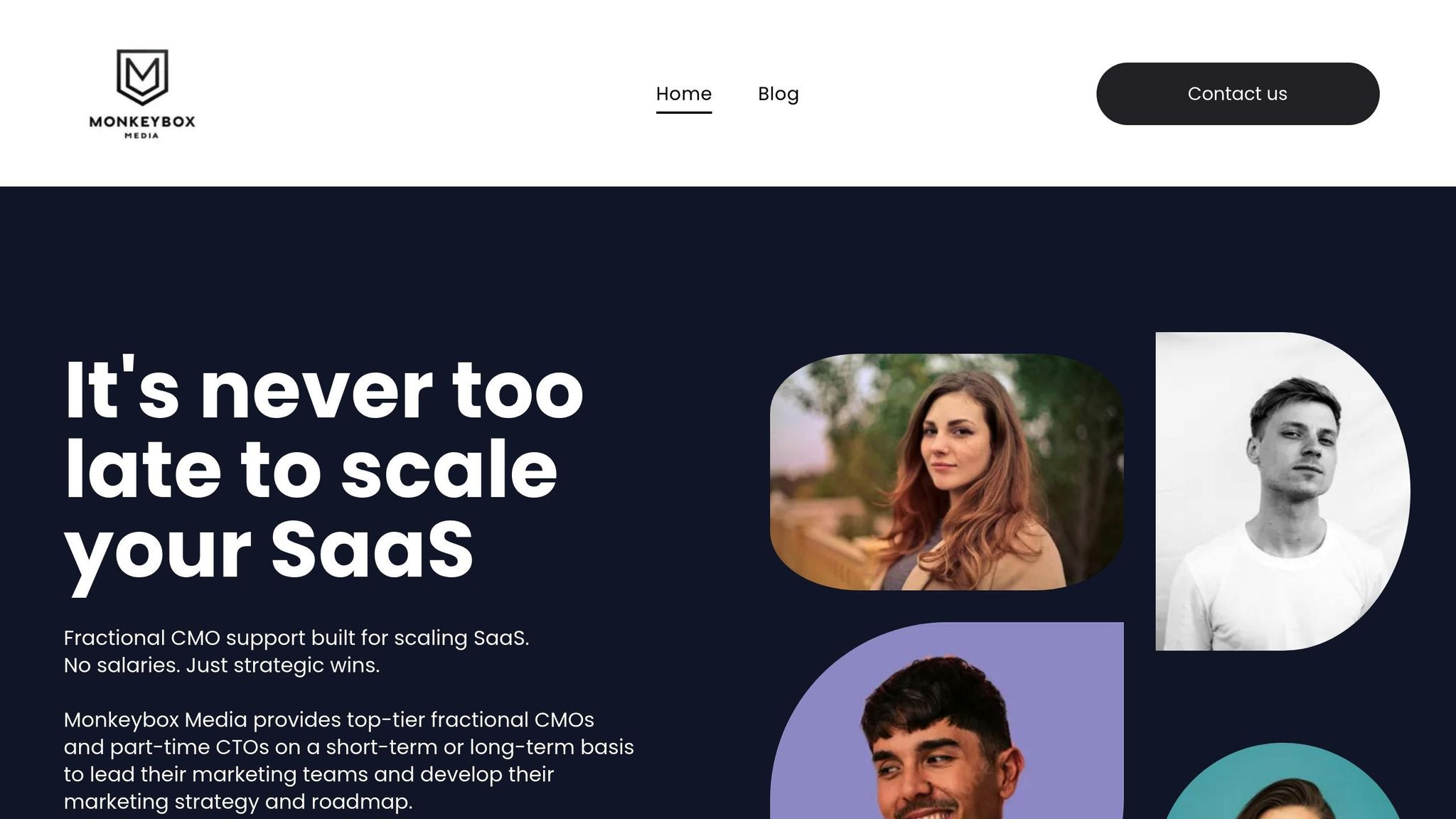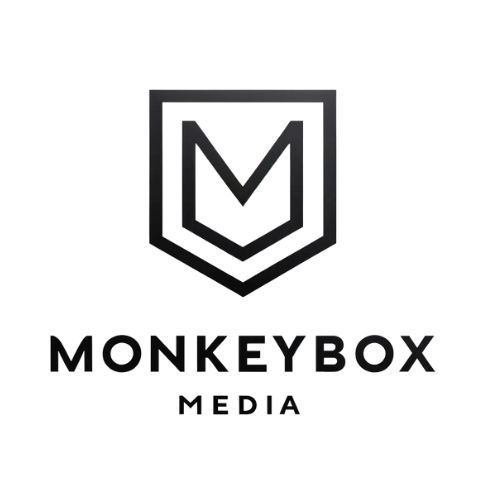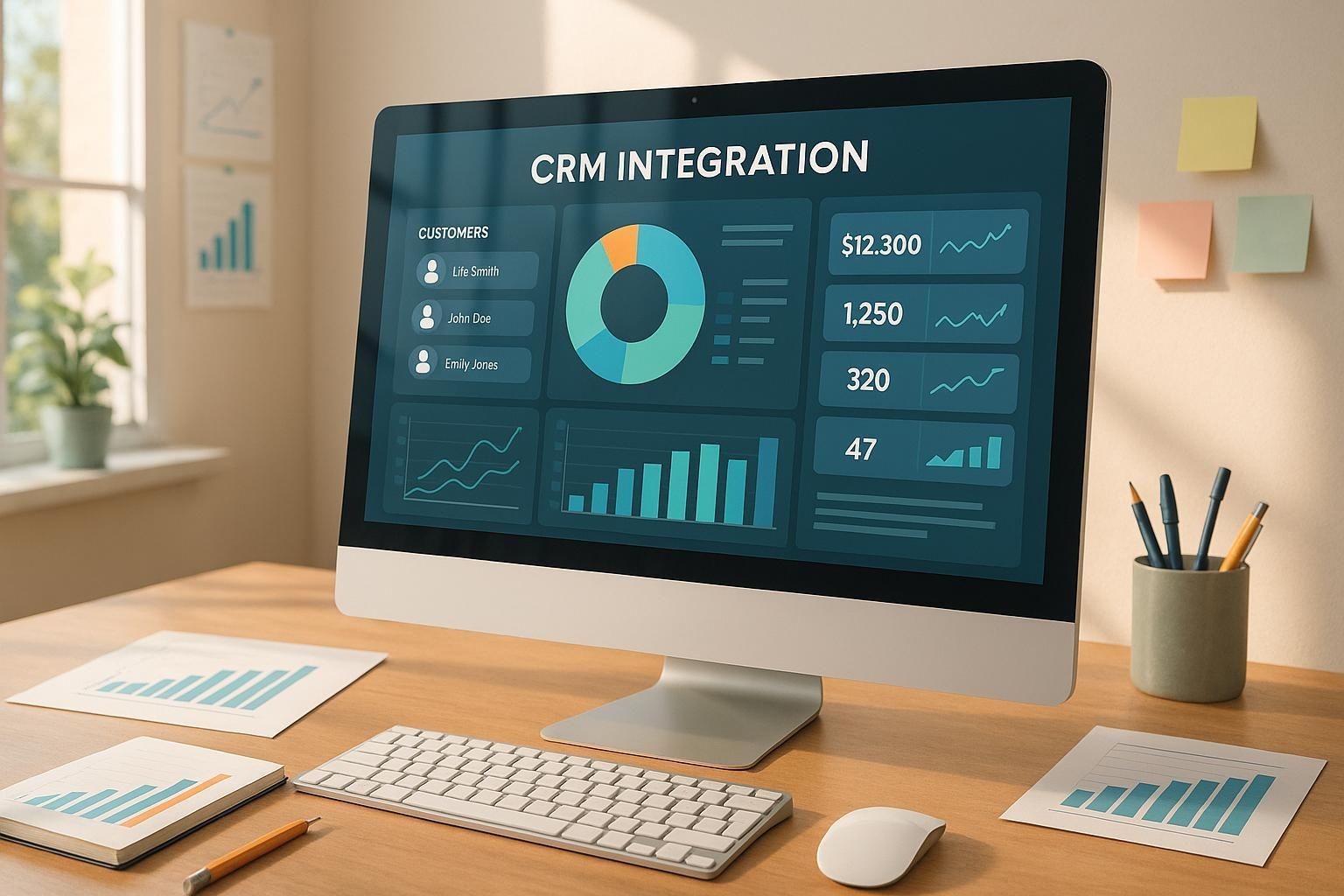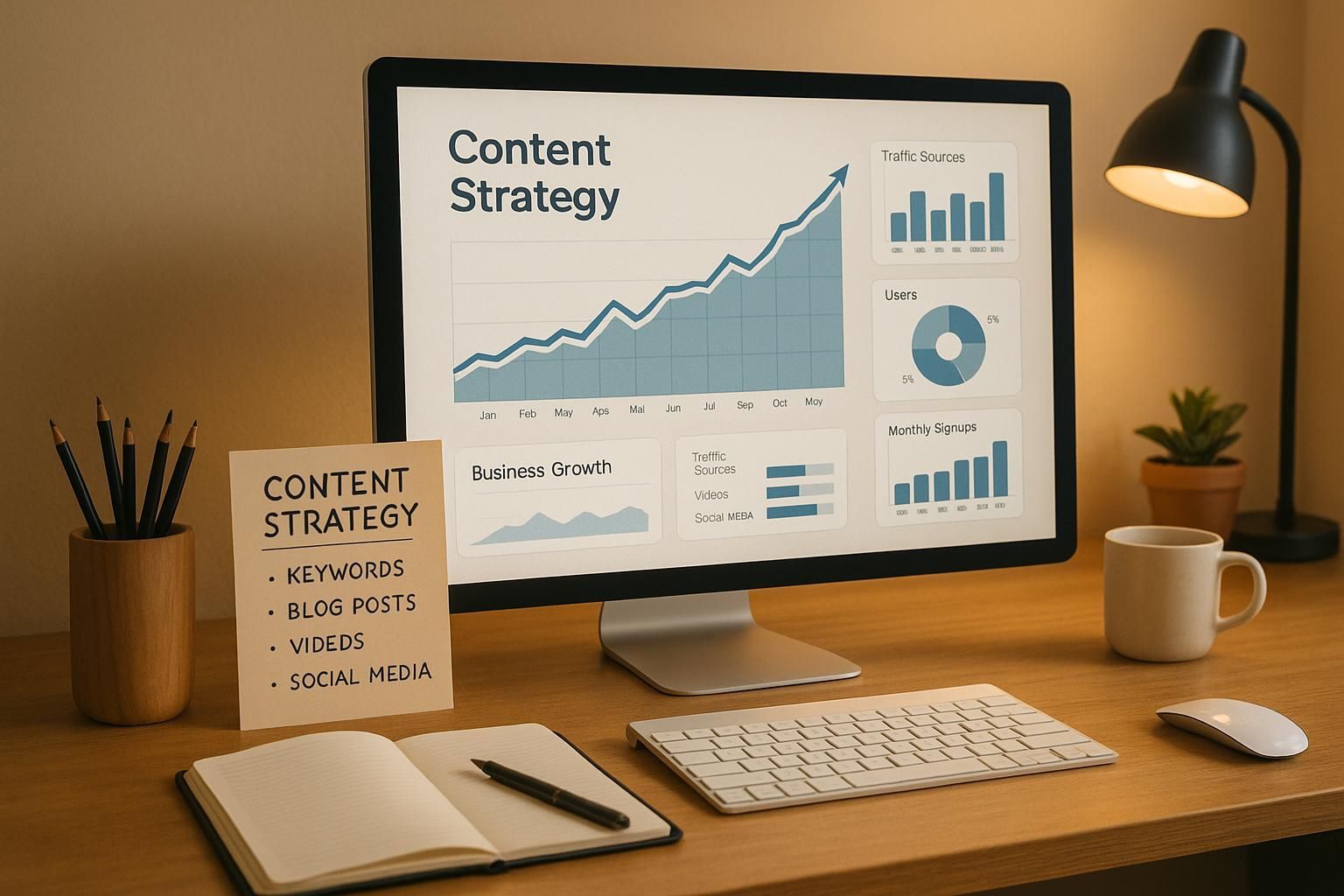Building Continuous Improvement Frameworks for SaaS
Continuous improvement is the backbone of SaaS success. It’s about making small, consistent updates to your product, processes, and customer experience to stay competitive and grow. Unlike traditional software models, SaaS thrives on frequent updates and real-time feedback. Here’s why it matters:
- Customer Retention : Regular improvements reduce churn and increase loyalty.
- Revenue Growth : Enhanced features and better user experiences drive upgrades and higher usage.
- Efficiency : Refining workflows saves time and resources.
To build a framework for improvement, SaaS companies use methods like PDCA cycles , Lean and Agile principles , and data-driven feedback loops . Metrics such as Net Revenue Retention (NRR) , Customer Satisfaction Scores (NPS, CSAT) , and Time to Value (TTV) guide these efforts. Cross-functional collaboration and small-scale testing ensure changes are effective before scaling.
For companies needing specialized expertise, fractional leadership provides experienced professionals who can implement these strategies without the cost of full-time hires. This approach ensures continuous progress even with limited resources.
Start small: focus on one metric, involve your team, and measure results. Continuous improvement isn’t a one-time effort - it’s a mindset that drives long-term SaaS success.
Core Frameworks for Continuous Improvement
Structured frameworks are the backbone of continuous improvement. The best SaaS companies don’t rely on guesswork or intuition - they follow proven methods that create consistent processes for spotting issues, testing fixes, and scaling what works.
Using the PDCA (Plan-Do-Check-Act) Cycle
The PDCA cycle offers a step-by-step approach to testing and implementing improvements in a SaaS business. This four-phase process ensures changes are deliberate, measurable, and lasting, avoiding quick fixes that might cause more problems down the line.
- Plan : Start by identifying areas that need improvement and forming hypotheses about potential solutions. For instance, you might analyze user data to figure out why customers drop off during onboarding or comb through support tickets to find recurring technical issues. Clear goals and timelines are essential at this stage.
- Do : Put your plan into action, but on a small scale. Use tools like feature flags to test changes on a limited group of users. This controlled rollout minimizes risk while providing valuable feedback.
- Check : Review the results against your initial hypotheses. Whether you’re tracking conversion rates, engagement, or system performance, the data collected will show if your changes are working.
- Act : If the changes are successful, implement them across the board. If not, use what you’ve learned to refine your approach for the next iteration. For example, if a new onboarding flow boosts completion rates, roll it out universally and look for other areas to improve.
The PDCA cycle is especially effective in SaaS because it aligns with the iterative nature of software development and the constant need for optimization in subscription-based models. It also pairs seamlessly with Lean and Agile methodologies, which further streamline processes while maintaining flexibility.
Applying Lean and Agile Principles
Lean and Agile principles complement each other perfectly in SaaS environments, where efficiency and adaptability are critical to staying competitive. Together, they help teams reduce waste while staying responsive to customer needs.
- Lean principles focus on cutting out activities that don’t add value for customers. For example, value stream mapping can highlight bottlenecks in processes like onboarding, feature development, or customer support. By visualizing the entire journey - from a user’s first interaction to successful product adoption - you can pinpoint areas of friction or delay. This might mean simplifying your product interface to avoid confusion or streamlining support workflows to speed up response times.
- Agile principles emphasize quick iterations and frequent feedback from users. SaaS companies are naturally suited to this approach since they can deploy updates often and gather insights through various channels. Sprint cycles, for instance, ensure teams stay focused on delivering meaningful improvements quickly.
When combined, Lean and Agile create a strong framework for collaboration across departments like product management, development, customer success, and marketing. Changes in one area often ripple into others, so this alignment ensures everyone is working toward solutions that genuinely enhance the customer experience. Additionally, tools like the 5 Whys technique can deepen problem-solving efforts, rounding out a robust toolkit for continuous improvement.
Using the 5 Whys Analysis
The 5 Whys technique is a simple yet powerful way for SaaS teams to uncover the root causes of recurring problems . Instead of treating symptoms, this method digs deeper to address the underlying issues.
Here’s how it works: Ask “why” five times, with each answer leading to a more detailed understanding of the problem. For instance, if customers are canceling subscriptions after one month, the first “why” might reveal they’re not using key features. The second “why” could show they don’t understand those features. By the fifth “why,” you might discover that the onboarding process doesn’t clearly explain the benefits or that the interface makes features hard to find.
Rather than simply adding more tutorial videos to address the confusion, this analysis might point to a deeper issue - like poor information architecture - that needs fixing. The result? A solution that not only resolves the immediate problem but also prevents similar issues from cropping up later.
The 5 Whys technique works best when applied systematically across different challenges, such as customer churn, performance bottlenecks, or high support ticket volumes. Involving team members who are directly familiar with the problem often brings fresh insights that data alone can’t provide.
Documenting the entire process - each “why” and its corresponding answer - builds a knowledge base that can reveal patterns over time. This historical perspective helps teams identify systemic issues affecting multiple areas of the business.
What’s more, the 5 Whys analysis integrates seamlessly with other frameworks. Once you’ve pinpointed the root cause, you can use the PDCA cycle to test solutions or Lean principles to eliminate wasteful processes contributing to the problem. Together, these approaches form a comprehensive strategy for continuous improvement in SaaS operations.
Key SaaS Metrics for Continuous Improvement
Metrics are the compass for continuous improvement in SaaS. Without them, decisions are left to guesswork. The key is to focus on metrics that reflect customer satisfaction, business growth, and operational performance - metrics that inspire action.
Important SaaS Metrics to Track
Net Revenue Retention (NRR) is one of the most telling metrics for SaaS success. It measures the revenue retained and expanded from existing customers over time, factoring in upgrades, downgrades, and churn. A strong NRR - anything over 100% - signals that your existing customers are contributing more revenue, even without new acquisitions.
NRR is a mirror of how well your product delivers value, how effective your customer success strategies are, and whether your offerings encourage upgrades. A drop in NRR often points to customers not seeing enough value to stick around or missing opportunities to explore more of your product. This makes NRR a guidepost for prioritizing improvements, whether that means refining onboarding, enhancing features, or identifying new ways to serve your customers.
Customer Satisfaction Scores , such as NPS (Net Promoter Score) and CSAT (Customer Satisfaction Score), offer qualitative insights that complement hard data. NPS gauges customer loyalty and their likelihood to recommend your product, while CSAT measures satisfaction with specific interactions or features. These scores can pinpoint areas where changes will have the most impact on customer experience.
Timing is everything when it comes to these surveys. NPS collected quarterly helps track overall sentiment, while CSAT surveys conducted right after key moments - like completing onboarding or resolving a support ticket - provide immediate, actionable feedback.
Committed Annual Recurring Revenue (ARR) gives a forward-looking view of your business's growth trajectory. This metric helps you assess whether your improvement efforts are steering you toward sustainable success.
Customer Acquisition Cost (CAC) and Customer Lifetime Value (LTV) are two sides of the same coin. Together, they reveal how efficiently your growth engine runs. Ideally, your LTV:CAC ratio should be 3:1 or higher, meaning customers generate three times the value of what it costs to acquire them. A declining ratio signals a need to either lower acquisition costs or improve retention.
Time to Value (TTV) measures how quickly new customers achieve their first meaningful outcome with your product. This metric ties directly to retention and potential expansion. A long TTV often points to issues like a complicated onboarding process or an unclear value proposition - both of which can be addressed with targeted changes.
These metrics create the foundation for actionable feedback loops.
Creating Feedback Loops with Data
Real-time data collection transforms metrics from static reports into dynamic tools for improvement. Today's SaaS platforms can track user behavior, feature adoption, and engagement in real time, enabling swift adjustments.
Behavioral analytics , including tools like heat maps, session recordings, and usage stats, reveal how customers interact with your product. They can uncover friction points that surveys might miss. For example, if users frequently abandon a specific workflow or avoid certain features, that data highlights where improvements are needed.
Customer feedback integration closes the loop between user experience and product development. Tools that automatically collect and organize support tickets, feature requests, and user comments help teams identify patterns and focus on what customers truly need, rather than relying on assumptions.
The most effective feedback loops combine multiple data sources. For instance, if NPS scores drop in a specific customer segment, cross-referencing that with product usage data, support ticket trends, and churn rates can uncover the underlying issue and guide targeted solutions.
Automated alerts and dashboards keep teams informed about key metric shifts. Setting up notifications for when metrics fall outside expected ranges allows for quick responses, preventing small problems from escalating into major customer experience issues.
By linking these insights to broader business goals, feedback loops become a powerful driver of continuous improvement.
Connecting Metrics to Business Outcomes
The best SaaS companies align their metrics with clear business objectives. This ensures that every improvement effort contributes directly to growth, retention, or profitability.
| Metric | Outcome | Focus Areas |
|---|---|---|
| Net Revenue Retention | Growth from existing customers | Product value, customer success, expansions |
| Customer Acquisition Cost | Marketing and sales efficiency | Lead quality, conversion rates, sales process |
| Time to Value | Faster customer activation | Onboarding, product clarity, user guidance |
| Feature Adoption Rate | Product engagement and stickiness | User education, feature visibility, value |
| Support Ticket Volume | Operational efficiency, satisfaction | Product usability, self-service resources |
Leading and lagging indicators work hand in hand. Metrics like customer health scores and engagement levels serve as early warnings, while revenue and retention figures confirm whether your strategies are paying off.
Cohort analysis adds another layer of insight. By tracking specific customer groups over time, you can measure how changes impact different segments and avoid making decisions based on short-term fluctuations.
Finally, cross-functional metric ownership ensures that improvements don’t remain confined to one team. For example, marketing might own CAC, customer success handles NRR, and product teams focus on feature adoption. Regular cross-team reviews foster collaboration and shared accountability, ensuring everyone contributes to the business's overall success.
Steps to Build and Implement a Continuous Improvement Framework
Creating a continuous improvement framework involves a structured approach. It starts with understanding your current processes, engaging the right people, and scaling successful changes across the organization. These steps are rooted in the PDCA cycle and Lean principles.
Assessing Current Processes and Setting Goals
The first step is to evaluate your current workflows. This means taking a close look at how things actually operate, especially in customer-facing areas, and identifying bottlenecks or inefficiencies.
Process mapping is a key tool here. It helps uncover the reality of how work is done versus how it’s assumed to be done. Focus on processes like customer onboarding, resolving support tickets, and handling feature requests. Pay attention to how long each step takes, who’s involved, and where delays occur.
Once you’ve mapped your processes, set specific goals based on what you’ve learned. Avoid vague objectives like "improve customer satisfaction." Instead, aim for measurable targets, such as reducing the time for new customers to achieve their first value from 14 days to 7 or increasing feature adoption rates by 25% within six months.
Before making any changes, establish a baseline measurement . Record current performance metrics so you can track progress and avoid mistaking the status quo for improvement.
Finally, prioritize your efforts by focusing on initiatives with the biggest potential impact. A simple framework that weighs customer experience improvements against the effort required can help. Start with quick wins that offer noticeable benefits with minimal effort to build momentum for larger projects.
With clear goals in place, the next step is to ensure all teams are aligned and ready to execute.
Working with Cross-Functional Teams
Continuous improvement isn’t a one-department job. Success comes from collaboration across marketing, product, customer success, and support teams, all working toward shared goals.
Shared ownership is crucial. Each team needs to understand how their work influences the overall customer experience. For example, marketing’s messaging can impact product adoption, while product features can affect support ticket volume. Customer success teams provide insights that can guide both marketing and product strategies.
Holding regular cross-functional meetings keeps everyone on the same page. Weekly or bi-weekly sessions where teams share updates, discuss customer feedback, and plan improvements help prevent silos and miscommunication.
Establish communication protocols to ensure information flows freely. For instance, if the customer success team identifies a recurring pain point, that insight should quickly reach the product and marketing teams. Similarly, when marketing finds messaging that resonates, customer success should know so they can reinforce it during onboarding.
Each initiative needs clear accountability . While teams collaborate, assigning a specific owner to each project ensures progress is tracked and results are measured. This person acts as the go-to contact for updates and decisions.
Finally, encourage knowledge sharing across teams. Create a system where lessons from experiments - both successes and failures - are documented. A shared repository of insights helps everyone learn faster and avoid repeating past mistakes.
Testing Changes and Scaling Success
Once teams are aligned, it’s time to test proposed changes on a smaller scale. This allows you to validate improvements before rolling them out widely.
Start with small-scale pilots to test changes with minimal risk. For example, try a new onboarding process with a specific customer segment or test changes in one geographic region. This approach provides real-world data without disrupting your entire customer base.
Use A/B testing to compare different approaches. For instance, you could test new support response templates, alternative onboarding flows, or different ways to introduce features. Focus on changing one variable at a time to clearly identify what’s driving improvements.
During the pilot phase, collect feedback from both customers and team members. Combine metrics with qualitative insights to understand not just whether a change works, but why it works. This helps refine the approach before scaling up.
Set success criteria upfront. Decide which metrics need to improve - and by how much - for the change to be considered successful. This ensures you stay objective and don’t overlook negative side effects.
When rolling out successful changes, scale gradually . Start with a larger group and monitor metrics closely at each stage to catch any issues early.
Finally, document successful changes and update your processes . Train teams on the new methods to ensure improvements stick. Without this step, there’s a risk of slipping back into old habits.
Even after full implementation, continuous monitoring is essential. Keep tracking the metrics that improved during testing to ensure the benefits last. Over time, changes may lose their effectiveness as customer needs evolve or new challenges emerge, so staying vigilant is key.
sbb-itb-6e0f5a2
Using Fractional Leadership for Continuous Improvement
Fractional leadership has become a game-changer for SaaS companies looking to sustain and scale continuous improvement frameworks. Many businesses in this space face challenges like limited resources or a lack of specialized leadership, making it tough to implement these frameworks effectively. Fractional leadership steps in as a practical solution, offering immediate access to high-level expertise without the long-term commitment of full-time hires. It’s a flexible and cost-conscious way to boost internal efforts with external know-how.
The Benefits of Fractional Leadership for SaaS
Fractional leaders bring a wealth of experience and hit the ground running. Unlike full-time hires, who may need time to acclimate to your business, these leaders can quickly assess your needs, identify inefficiencies, and implement improvement strategies. This speed and precision make them especially valuable for SaaS companies aiming to stay competitive.
Another advantage is cost-efficiency. Fractional leadership provides the strategic expertise of senior executives at a fraction of the cost of hiring someone full-time, making it an attractive option for companies that aren’t ready to invest in permanent roles.
Their outsider perspective is another major plus. Because they’re not entrenched in your company’s day-to-day operations, fractional leaders can spot inefficiencies or missed opportunities that internal teams might overlook. This fresh viewpoint can lead to breakthroughs in solving persistent challenges.
Flexibility is also key. Fractional leaders can scale their involvement based on your needs - ramping up during critical projects and scaling back during quieter periods. This adaptability ensures you’re always getting the right level of support.
Lastly, their experience across multiple companies means they bring tested strategies and proven frameworks to the table. Instead of relying on theoretical solutions, they apply approaches that have worked in similar scenarios.
How Monkeybox Media Supports SaaS Improvement

Monkeybox Media is a prime example of how fractional leadership can drive continuous improvement in SaaS. Their approach combines strategic marketing expertise with technical optimization, ensuring that every improvement effort aligns with both customer needs and market demands.
For instance, their fractional CMO services help SaaS companies fine-tune their marketing strategies, while part-time CTO support ensures technical systems are ready to handle growth. This dual focus ensures that both the customer-facing and backend aspects of the business are optimized for success.
They also excel at breaking down silos between departments. Continuous improvement often stalls when teams like marketing, product, and technical departments aren’t aligned. Monkeybox Media’s fractional leaders work across these functions to ensure everyone is on the same page, with clear goals and performance metrics.
Their process improvement services are another highlight. By identifying bottlenecks in workflows - like marketing automation or backend systems - they implement solutions that lead to lasting improvements. This focus on streamlining processes directly enhances the customer experience.
Additionally, their project management expertise ensures that improvement plans don’t just sit on paper. They provide the accountability and oversight needed to turn plans into measurable outcomes.
What sets Monkeybox Media apart is their emphasis on coaching and team-building. Their fractional leaders don’t just fix problems; they empower internal teams with the skills and knowledge needed to sustain improvements long after the engagement ends.
Flexible Service Models for Scaling Growth
One of the standout features of fractional leadership is its adaptability. With customizable engagement models, you’re not locked into rigid contracts. This flexibility allows SaaS companies to adjust the level of involvement based on current needs, budgets, or even seasonal demands - making it an ideal solution for businesses navigating rapid growth or fluctuating priorities.
Fractional leaders integrate seamlessly with your team, tailoring their approach to fit your company’s vision rather than applying one-size-fits-all solutions. Their expertise across multiple channels means they understand how changes in one area - like marketing or product development - can ripple across others, ensuring a holistic approach to improvement.
This flexibility also reduces risk. If a particular strategy isn’t working, fractional leaders can pivot quickly, experimenting and iterating to find what works best. This agility is essential for fostering continuous improvement, where progress often comes from trying new approaches and learning from them.
Finally, fractional leadership ensures that improvement initiatives stay on track. While internal teams may get bogged down with daily operations, fractional leaders keep continuous improvement a top priority, ensuring consistent progress even when other demands compete for attention. This steady focus is crucial for driving long-term success.
Conclusion and Key Takeaways
Establishing frameworks for continuous improvement isn't just a nice-to-have for SaaS companies - it's a necessity in today’s fast-paced market. The strategies and approaches discussed in this guide offer a clear path to fostering growth and operational excellence.
Why Continuous Improvement Matters
Continuous improvement is a game-changer for SaaS businesses, offering benefits that directly impact growth, efficiency, and customer satisfaction.
- Customer Satisfaction and Retention : By consistently refining your product using real user feedback and data, you can address customer pain points quickly. This not only keeps customers happy but also boosts retention and increases their lifetime value.
- Operational Efficiency : Applying methods like PDCA cycles and Lean principles helps eliminate wasted time and resources. Teams work smarter, communication improves, and workflows become more streamlined, leading to long-term gains.
- Scalability : Processes built for continuous refinement make scaling much easier. Instead of facing massive overhauls as you grow, you’re already tackling bottlenecks before they become major issues. This keeps your business nimble and ready for expansion.
- Competitive Edge : In a crowded SaaS market, a mature improvement culture sets you apart. While competitors can copy features, they can’t easily replicate a well-oiled system for ongoing improvement that’s been fine-tuned over time.
How to Get Started
To bring continuous improvement into your operations, start small and build from there. Focus on one metric that directly impacts your business, like reducing churn, increasing feature adoption, or speeding up support response times. Create feedback loops around this metric to gather insights and drive change.
Align your teams early so that customer feedback directly influences product and technical decisions. Avoid relying on gut instincts - set up tracking systems to measure the effects of your efforts and ensure your actions are data-driven.
If your internal team is stretched thin or lacks specialized expertise, consider bringing in external help . For example, fractional leadership services like Monkeybox Media can provide the experience and strategies you need without requiring long-term commitments. Their ability to draw from lessons learned across multiple SaaS companies can help you avoid common mistakes and accelerate your progress.
Continuous improvement isn’t a one-and-done effort - it’s an ongoing journey. As your business grows and market conditions shift, your frameworks should adapt and evolve. Stay committed to measuring, refining, and embracing change. This mindset will keep your SaaS business agile and ready to tackle whatever challenges come your way.
FAQs
How can SaaS companies apply Lean and Agile principles to build better continuous improvement frameworks?
To effectively bring Lean and Agile principles into a continuous improvement framework for SaaS, the key lies in leveraging the strengths of both methodologies. Lean focuses on cutting out waste by eliminating activities that don't add value and simplifying workflows, which leads to more efficient processes. On the other hand, Agile thrives on iterative development, constant feedback, and the ability to adapt to change.
When these two approaches are combined, SaaS companies can foster a mindset of ongoing improvement , stay responsive to shifting customer needs, and consistently deliver better outcomes. This blend not only enhances team flexibility and collaboration but also ensures a strong focus on the customer - essential ingredients for scaling and sustaining success in the fast-moving SaaS world.
How does fractional leadership support continuous improvement in SaaS companies?
Fractional leadership offers SaaS companies a way to tap into experienced, high-level talent in areas like marketing, operations, and customer success without committing to full-time hires. This model allows businesses to bring in senior leaders who are aligned with their unique needs and growth stage, making it easier to pivot and respond to both challenges and opportunities.
With fractional leaders on board, SaaS companies can prioritize growth, efficiency, and adaptability . These professionals bring new insights and focused strategies to the table, helping businesses refine processes, boost performance, and achieve their goals - all while keeping expenses under control.
How can SaaS companies align their metrics with business goals to drive continuous improvement?
To ensure metrics align with business goals, SaaS companies need to establish specific and measurable KPIs that tie directly to their strategic priorities. Key areas to focus on include metrics like customer retention , customer acquisition cost (CAC) , and monthly recurring revenue (MRR) - all of which provide valuable insights into performance and growth.
By integrating these metrics across different teams, companies can encourage collaboration and ensure everyone is working toward the same objectives. It's also crucial to regularly review and refine these KPIs to reflect performance trends and adapt to changing strategies. This practice keeps SaaS businesses nimble and focused on achieving steady, sustainable growth.








